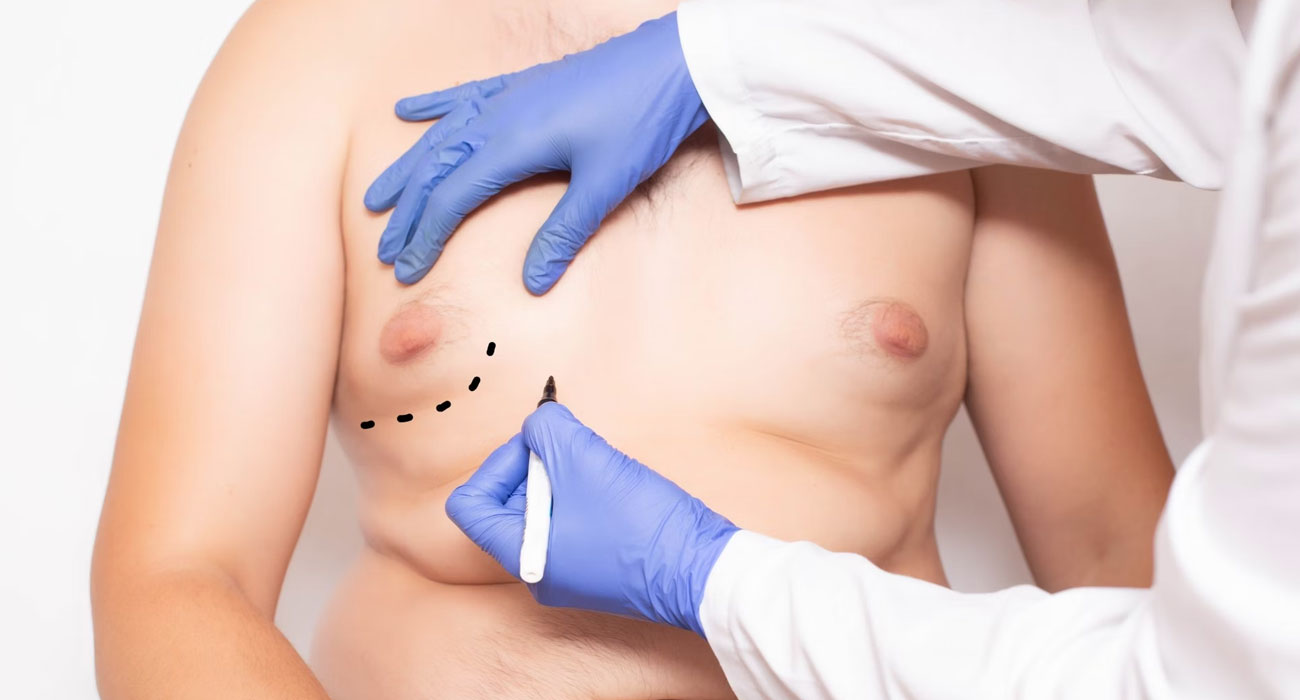
Gynecomastia is a condition of swollen breast glands in males caused by an imbalance in the estrogen and testosterone hormones. Having prominent testosterone levels brings about an increase in features unique to males such as facial hair, muscle tone, and body shape. At the same time, females have prominent estrogen levels to balance the growth of breasts. In case males encounter a slight growth in estrogen level, the swelling in breast gland tissues may be seen. Though at times this issue is related to hormonal balance and might revert when reverse changes in levels occur. It might also persist.

Gynecomastia occurs in 4 stages:
Grade 1: This is a basic swelling stage where the excess gland tissues are not too revealing. There is no extra skin development that needs to be taken care of. But some obvious signs give away the presence of this issue and the pressing need to solve it.
Grade 2: This is where there is no extra development easily recognisable. But the males may feel slight enlargement and swelling in nipples causing discomfort.
Grade 3: A step over the Grade 2 stage reveals a prominent issue with swollen gland tissues with extra growth and considerable swelling in the skin and nipples.
Grade 4: This is the most problematic stage with very easily recognizable swelling and too much gland tissue growth causing concern for visible aesthetics and comfort.
The first step to understanding, if you have a problem, is finding signs and then shortlisting the grade that you are on. Consultants may help you find the right problematic stage and possible solutions.
There are some obvious symptoms of each gynecomastia stage:
Grade 1: Discoloration in nipples is one of the most obvious signs. The conical shape of nipples may be experienced while there are no obvious signs when clothed.
Grade 2: Feeling slightly swollen breasts is an obvious sign along with stiff nipples and harder breasts experienced prominently in loose clothing.
Grade 3: Feeling prominent chest protrusion causes self-consciousness to suffer. The breasts are droopy and easily visible through loose clothing.
Grade 4: A very difficult stage where harsh protrusion may be seen. This is more similar to a look resembling a woman. This significant growth is a serious matter treatable only through surgery.
Earlier stages are more easily treated with outstanding results and no hassle. It is better to keep a lookout for such a problem and take action if a slight feeling arises.
Experiencing gynecomastia is a journey of self-reflection and confidence that is bound to be shaken. There are easy and quick ways of getting rid of gynecomastia. One process that can help the most with guaranteed results is surgery. It is preferred to opt for it only if the problem is in the later stages with no hope for non-surgical processes. This procedure is most commonly carried out in males 50 years old or older by using processes such as liposuction and removing excessive tissues.
Resplendent Cosmetics has been at the helm of cosmetic surgical procedures for a long while now having amassed an incredible amount of experience in handling challenging cases. Gynecomastia is one such faction of issues solved previously. Dr. Sukhbir Singh is a renowned surgeon and consultant prominently known for gynecomastia surgery in Delhi. With his practiced hands, nothing is out of reach and everything becomes easy to overcome. Consulting a medical professional would help you find the best solution to your problems.
Facing problems of gynecomastia is enough to land a heavy blow to the self-esteem of an individual. To ensure the right solution, consultation with the best doctors is important. Discussing the condition and possible solution will ensure that you are done with the hard part and now the procedure is in the capable hands. Furthermore, the more you follow the post-operative tips, the easier the path will be to recovery.
Copyright - All Rights reserved © Resplendent Cosmetics
Powered by ITPL